INTERVIEW: Wim Sarens
15 June 2023
Heavy lift and transport giant Sarens recently announced a return to 100 % family ownership. With a stable and secure future set for the global company, CEO Wim Sarens spoke to ICST on their ambitions to be at the forefront of the energy transition.
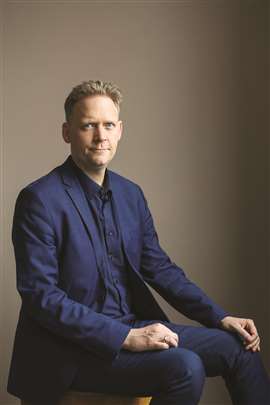 Wim Sarens, CEO at Sarens
Wim Sarens, CEO at Sarens
Congratulations on regaining 100 per cent of the company. When was the last time it was all in the hands of the family?
Wim: That was in August 2011, when we attracted a private equity company to help us grow, mainly outside of our established markets. Back then we started internationalising a lot more, expanding into Australasia, North America, Asia and Africa.
At the time it was a change, a lot more of the decisions and structures became a lot more formal, which required certain adjustments. On the other hand, I believe we’ve always had a good management team in place so interacting with a diversified board was always something we’d be able to do. It was a good learning exercise but at the same time we’re happy to be on our own again.
What does it mean to have regained 100 % of the company?
Wim: The major difference is we know quite well what’s going to happen with the ownership of the company over the next decade. When you have an investor come in, they always enter with an idea to exit at one point in time, which can create an uncertainty, even if they intend to stay long-term. Now we know for sure that the team we have in place is there to stay. It creates long term visibility and stability from the top.
How do you make the big decisions that affect the direction of the business?
Wim: We have a board of directors, so the major decisions are taken on that level. On the other hand, our industry being what it is, 99 % of the daily running is done by a management team. There’s a good interaction between both levels.
The advantage is that most people in the board have a very good understanding of our industry and the industry of our clients and our suppliers, which really helps in supporting management with implementing our strategies.
Since covid, the way we are organised is quite straightforward. The company is organised in clear profit and loss business units based on geographies, and one more specialized project unit, to ensure we stay close to our clients and markets, and can still address and organise the more complex works centrally.
Every BU has a 5 year strategic plan, those are developed and discussed, as well as reviewed regularly amongst the management team members, and we keep our board regularly updated, so they can steer and correct if and when needed.
What are the main things that will change?
Wim: I think what has changed practically is what you can see from the management team. There is real reassurance that the people on the board are there for the long run, and that’s a major change.
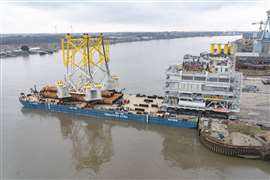 Offshore substation for the UK Race Bank wind farm leaves the Port of Antwerp (Photo: Sarens)
Offshore substation for the UK Race Bank wind farm leaves the Port of Antwerp (Photo: Sarens)
In our business, we have now eight family members of the “fourth generation”, which are active in the company, and three family members of the “3rd generation” which reduced their daily operational roles, and can still act as advisors when the board and the fourth generation were to need it.
We are working on setting up a more structural “family forum” to ensure that we can keep the ultimate shareholders properly informed on the status of the company, irrespective of their daily responsibility, or board-membership or not.
Will you ramp up efforts in the renewable energy sector?
Wim: Yes, I personally believe that renewable energy is something that is not just an option – it’s a must do, for everyone on this planet.
We see a lot of movement in the wind sector, particularly in Europe with offshore farms. North America as well as countries in Asia like Korea, Japan and Taiwan are all engaging with wind plans as well.
So there’s a lot of changes coming worldwide. There’s a big movement towards floating wind work as well, which will have a major impact on our industry.
The challenge remains on onshore wind to find a compromise between the wind-industry which requires a very specialized wind-mill-specific crane, and the other segments requiring more general cranes. We don’t want to over-expose ourselves with crane types which last only as long as a certain hub height and weight combination, and have limited use outside of wind, or when that turbine generation is no longer used.
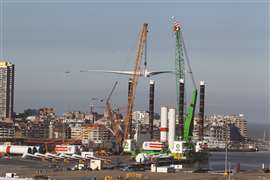 Transporting ever-larger turbines and components is a challenge (Photo: Sarens)
Transporting ever-larger turbines and components is a challenge (Photo: Sarens)
At the same time, in our headquarters in Belgium, we installed 850 kV solar panels and 50 kVA solar panels in our Polish headquarters. It was the best choice for those locations - obtaining a permit for a windmill is not always possible or as efficient everywhere in the world. We’ve removed all trash bins from our facilities across the world, and that helps people think about recycling more. It’s a full 360 sort of way of thinking that puts sustainability at the front of all our business operations and our day-to-day work. We launched our #sustainabilityaccelerator initiative. We want to showcase how others can have this fully sustainable thinking in all areas of business.
We’re also working more in the nuclear industry and looking into hydrogen, too. Globally, we see countries all over the world engaging with the energy transition.
We’ve gained new clients in the renewable sector, but we are also proactively making partnerships with key organisations that can help us achieve our sustainability goals.
I do see the renewables sector as a wider environment and social responsibility topic, and we are keen to make progress on this as part of our ESG strategy to lower our environmental footprint.
Is this drive for sustainability coming from your clients or is the industry resistant to green alternatives?
Wim: Yes, more and more, but I would say the challenge is that there’s no common approach.
Within Europe, every country has their own thinking, their own framework. Even within an individual country, there’s different rules and levels of progress and demands between cities. So it’s hard to develop one solution.
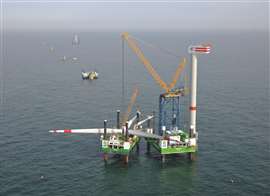 Sarens says offshore wind work is growing in popularity all across Europe (Photo: Sarens)
Sarens says offshore wind work is growing in popularity all across Europe (Photo: Sarens)
That’s why we try to have a more diversified approach. We think cranes working within city limits will be hybrid or electric first, whilst the really heavy cranes on larger construction sites may be upgraded later. We have to make choices on what is affordable and what is available technology wise.
If you want to plug a giant crane into the electricity grid, you need 2-3MW power supply. Often the infrastructure on sites is too basic. Cranes are there to help build this energy power. Our giant crane is working on Hinkley Point C in the UK where the largest nuclear power plant is being constructed. There’s a reason it’s being built, there needs to be more energy.
There’s still a lot to be resolved. It’s the same problem as with electric cars, if everyone were to buy one, you’d still need the proper charging infrastructure in place. There are still so many more issues that just the initial purchase. We’re trying to gain as much insights in many different supportive technologies as we can, and see what makes sense for each market.
You recently received an ESG rating from EcoVardis. What was involved and why have you been working on this?
Wim: We wanted a rating for ourselves to see where we stand, and to see what we needed to do. We were so pleased to gain a bronze rating, and it’s something our clients have really responded too.
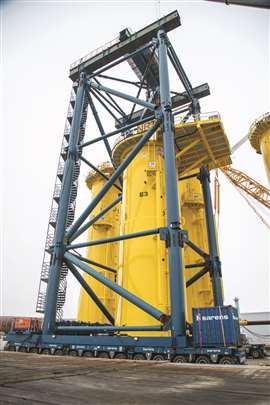 Sarens is a global leader in the heavy transport industry (Photo: Sarens)
Sarens is a global leader in the heavy transport industry (Photo: Sarens)
It gives you a score on what you’re doing well, where there’s minor improvements to be done, and where you can have major improvements. It’s filled in some gaps that we hadn’t seriously considered before too, and offered real targets for CO2 reduction.
We are still in the discovery process, and we are collaborating with more professional partners to make sure we have the tools in place.
When you go through the effort to collect data and to automate things, you need to make sure it has relevance and applicability for the real world, in any market around the world.
Will you expand and renew the equipment fleet?
Wim: Over the last few years we have invested heavily in our fleet and equipment. In the coming years we want to focus on the renewal of our existing rental fleet in Europe and North America.
We are testing out new concepts - some designed by manufacturers, some were co-designed with ourselves. Hybrid cranes are increasing in popularity. Cranes that can be driven with a normal engine but once on site can be plugged into the grid is a real advantage, so we’re investigating this development.
The power requirement for the larger cranes is still an issue but we have plans in place to replace some of our giant crane’s combustion engines with fully electric ones. We see a lot of progress with smaller cranes in this respect but the sheer physics of the larger ones creates a bit more of a challenge, one that as a company we want to meet and solve.
We are looking at offsetting strategies as well. For example, we are still planning to invest in a windmill on our head office site as well when we get the permit from the Belgian government. That will reduce enough CO2 to offset a lot of the CO2 output we have with heavy cranes.
It’s a matter of finding a good compromise between what is possible now and what can you really achieve the next five years with what technology is currently available. We want our fleet to be more sustainable.
Are you working to expand the workforce?
Wim: We’ve introduced a structure to the company that keeps a reduced and localised management team for each sector that’s working really well. It means we can have proper interaction with our clients and operators and improves communication, and staff retention. People feel proud of their sectors, and have a lot more customer facing time. Having smaller and independent units has given us good insight on what our customers need from us. I feel confident that we have the ability to grow our own future leadership.
Will you buy Mammoet?
Wim: No. We know our industry would benefit from some consolidation but for us, it doesn’t fit our strategy. We are large and diversified enough to tackle all the opportunities that will come our way over the next five years. We may pick up some smaller M&A deals on the back of retiring owners who have built up great companies as well.
We know what we want to focus on and have enough to be working with already. We are looking at our rental markets, particularly North America and the Middle East, and we want to make sure we go from a qualified ESG strategy to a more quantified one.
We have also set up a material handling division where we are supplying forklifts and material handling equipment to the industry as well. We have a lot of things going on and for now, we want to remain an independent, well diversified global player.
STAY CONNECTED


Receive the information you need when you need it through our world-leading magazines, newsletters and daily briefings.




